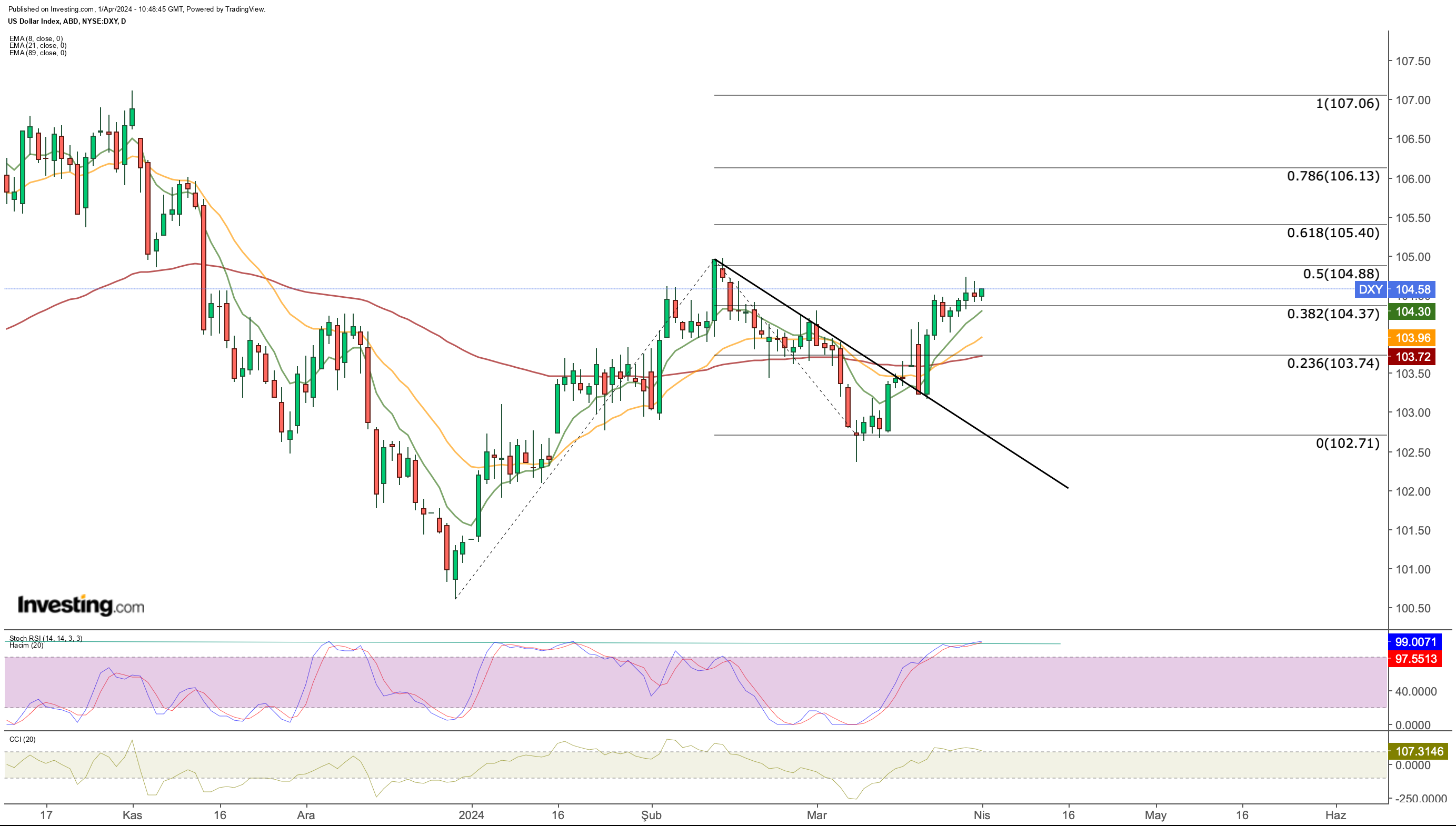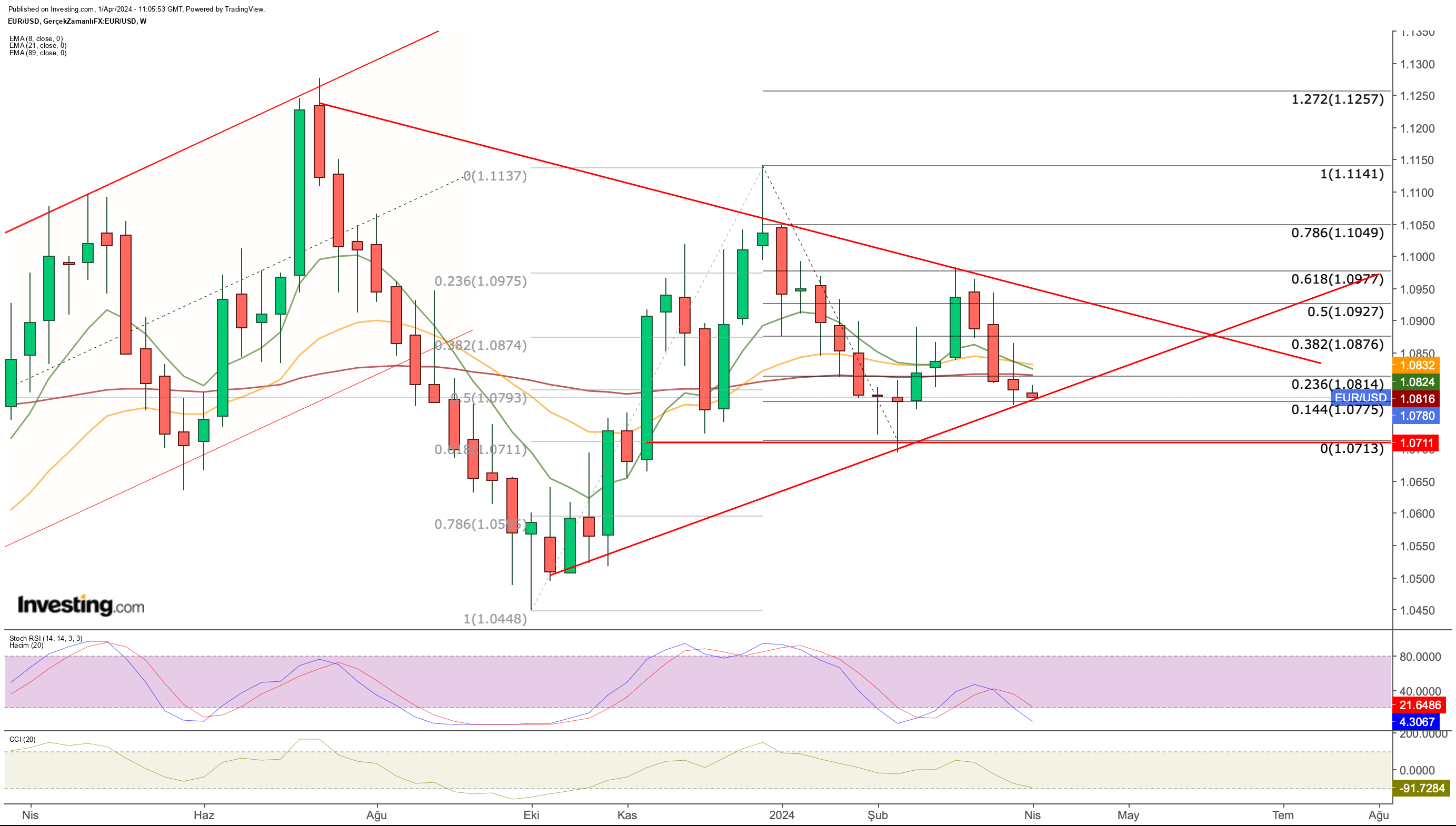On the last working day of the week, the data came in line with expectations. Powell’s remarks, signaling a cautious approach towards interest rate cuts, did not impact markets much. As a result, the has remained stable as the new week kicks off.
Following last week’s data release, expectations for a Fed interest rate cut in June increased. The Fed interest rate forecasting tool indicated a 60% chance of a 25 basis point rate cut in June.
Investors also maintained expectations for three rate cuts this year, with some speculating on the possibility of up to five cuts depending on employment data.
Given the Fed’s commitment to data-driven decisions, this week’s employment data holds significance. A notable decline in employment could prompt the Fed to fast-forward rate cuts.
Despite Powell’s emphasis on the Fed’s cautious approach to rate cuts, economic data continues to support a robust US economy, alleviating recession concerns. However, this scenario has exerted some pressure on the dollar against major currencies.

The DXY index slowed its recovery last week, stalling around the 104 zone. It’s now aiming to establish 104.3 as a support level.
If it holds above this mark, it could advance to 105. However, current data suggests its upward movement might be limited in the coming months.
Conversely, if it breaks below the 104 level, we may see a retreat to 103.70. Although this is a key support level, a deeper pullback to the 101.5 – 102.2 range could occur.
The upcoming NFP data, due at the end of the week, will be closely monitored as it could significantly impact the dollar index.
EUR/USD: Price Squeeze to Spark a Directional Move
With rate cuts the focus this year, the US side remains confident in the US economy and growth data while insisting that they want to see more evidence that inflation is slowing.
This raises expectations that the European Central Bank (ECB) may cut earlier than the Fed.
In Europe this week, ECB’s March minutes will be closely monitored along with Germany and then the Eurozone .
However, the fact that Europe’s economic situation is worse compared to the US in terms of stagnation leads us to believe that interest rate cuts in the region should start earlier.
This increases expectations that the Fed may cut interest rates in June while the ECB may cut rates in May. We see this situation reflected as a price squeeze in EUR/USD.
Since last week, it has been trying to find support at 1.077. If the pair manages to hold on to this support point, the next bullish move could continue up to 1.092.
If EUR/USD breaks the trend line originating from October 2023 to the downside, the euro might depreciate sharply against the dollar.
If the symmetrical triangle formed in the weekly outlook breaks downwards, the possibility of EUR/USD sagging below 1.05 will increase.
The price breakout in the medium term will be closely monitored around the 1.092 level.
If EUR/USD keeps above the 1.07 support in the coming days, we can expect increased volatility in EUR/USD towards the summer months.
***
Take your investing game to the next level in 2024 with ProPicks
Institutions and billionaire investors worldwide are already well ahead of the game when it comes to AI-powered investing, extensively using, customizing, and developing it to bulk up their returns and minimize losses.
Now, InvestingPro users can do just the same from the comfort of their own homes with our new flagship AI-powered stock-picking tool: ProPicks.
With our six strategies, including the flagship “Tech Titans,” which outperformed the market by a lofty 1,745% over the last decade, investors have the best selection of stocks in the market at the tip of their fingers every month.
Subscribe here and never miss a bull market again!
Disclaimer: This article is written for informational purposes only; it does not constitute a solicitation, offer, advice, or recommendation to invest as such it is not intended to incentivize the purchase of assets in any way. I would like to remind you that any type of asset, is evaluated from multiple points of view and is highly risky and therefore, any investment decision and the associated risk remains with the investor.

















